Kamakura is the historic stage where Minamoto no Yoritomo established Japan’s first samurai government, the Kamakura Shogunate. Appointed as Seii Taishogun (barbarian-subduing generalissimo) in 1192, Yoritomo paved the way for the era of the samurai. This land, which later flourished under the regency of the Hōjō clan, offers countless charms—not only for history enthusiasts but also for first-time visitors.
In this article, we introduce a half-day to full-day walking route starting from Kamakura Station, covering the key historical sites of Utsunomiya Zushi Gosho Ruins, Tsurugaoka Hachimangu Shrine, and Egara Tenjin Shrine. This compact, walkable course allows you to fully experience the dramatic stories of the Minamoto and Hōjō clans, while soaking in the serene atmosphere of Kamakura. The scenery is especially breathtaking during the cherry blossoms of spring or the vibrant colors of autumn. So lace up your walking shoes and set off on a journey into the romance of history!
A Brief History of the Kamakura Shogunate
In 1180, Minamoto no Yoritomo established his military government in Kamakura, laying the foundation for Japan’s first samurai-led regime. With the support of his wife, Hōjō Masako, the Minamoto clan revered Hachiman as their guardian deity. In 1225, Hōjō Yasutoki, aiming to reform politics, moved the shogunate’s center to the Utsunomiya Zushi Gosho. From the assassination of the third shogun, Minamoto no Sanetomo, in 1219 to the fall of the shogunate in 1333, Kamakura remained the heart of Japan’s political and cultural life.
This walking route allows visitors to experience this rich historical stage up close. After the rule of the three Minamoto shoguns—Yoritomo, Yoriie, and Sanetomo—real power shifted to the Hōjō clan, marking the start of the regency government (shikken seiji). Following Yoritomo’s death, Masako and the Hōjō clan upheld the government, and Yasutoki’s enactment of the Goseibai Shikimoku became Japan’s first warrior code.
However, due to internal strife and external pressure, the Kamakura Shogunate eventually collapsed in 1333 under the attack of Nitta Yoshisada. Though relatively short-lived, the shogunate left a deep and lasting mark on the city of Kamakura and Japanese history.。
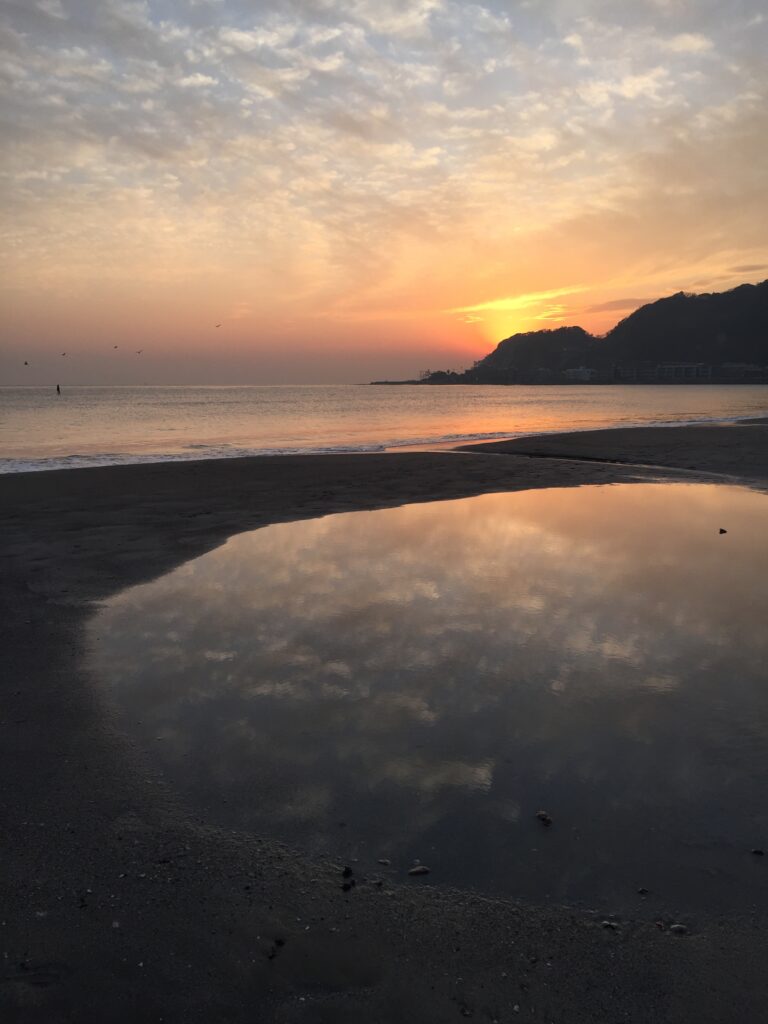
Walking Route: A Stroll Through History and Atmosphere
1. Utsunomiya Zushi Gosho Ruins (5–7 minutes on foot from Kamakura Station)
【Historical Background】
In 1225 (the first year of the Karoku era), the political center of the Kamakura Shogunate was relocated from Okura Gosho—founded by Minamoto no Yoritomo—to Utsunomiya Zushi Gosho by Hōjō Yasutoki. This move is believed to reflect Yasutoki’s desire for political reform after the passing of Hōjō Masako. A skilled regent, Yasutoki quelled turmoil within the government and enacted the Goseibai Shikimoku, a code of warrior law. The site also witnessed the coming-of-age ceremony of Fujiwara no Yorinaga, who became the fourth shogun. This place marks a turning point in Kamakura’s political history, and walking its grounds evokes a strong sense of history.
【Highlights】
Nestled behind Utsunomiya Inari Shrine in a quiet residential area off Komachi Street, a solitary stone monument stands. Though no grand ruins remain, reading the interpretive panel reveals the background of the shogunate’s relocation and Yasutoki’s motivations. Surrounded by tranquil houses, the monument exudes an atmosphere as if silently witnessing the bustle of the Kamakura period. Nearby, Komachi Street is perfect for sampling street food and finding souvenirs—enjoy local specialties like shirasu-don or Japanese sweets while tracing the footsteps of history.
【Visitor Tips】
- The stone marker is located in a residential area and has a small sign—keep an eye out so you don’t miss it.
- On Komachi Street, try souvenirs such as the hangetsu cookie from Kamakura Goro Honten or Kamaku‑la Custardfrom Kamakura New German.
- Plan for about 20 minutes here; taking time to read the information panel enhances your appreciation of the history.
2.Tsurugaoka Hachimangu Shrine (5–10 minutes on foot from Utsunomiya Zushi Gosho Ruins)
【Historical Background】
A symbol of Kamakura, Tsurugaoka Hachimangu was first established in 1063 when Minamoto no Yorinobu brought the kami from Iwashimizu Hachimangu. In 1180, Yoritomo relocated it to its present location. As protector deity of the Minamoto clan, Hachiman served as the spiritual centerpiece of the shogunate. After Yoritomo’s death, his wife Hōjō Masako continued to perform prayer rituals at the shrine, seeking the dynasty’s stability. However, in 1219, the tragic assassination of the third shogun, Minamoto no Sanetomo, by his nephew Kōgyōbene under a large gingko tree took place here, foreshadowing the decline of the Minamoto lineage and rise of the Hōjō clan.
【Highlights】
- Dankazura (entrance promenade): A cherry-tree-lined walk along Wakamiya Ōji. In spring the blossoms are stunning, and the tiered structure reflects Yoritomo’s city planning.
- Maiden Stage (Maidono): The ceremonial stage where Yoritomo and Masako held rituals—its solemn atmosphere conveys echoes of the past.
- Great Gingko Tree: Though the ancient tree fell in 2010, a young sapling has grown in its place. The site offers an interpretive panel explaining the infamous assassination.
- Surrounding Historical Sites: Nearby Hōkai-ji (linked to the Hōjō clan), Eifuku-ji ruins, and Shōchō-juin ruins evoke the grandeur of temples founded by Yoritomo.
【Visitor Tips】
- Allocate approximately 60 minutes for a full visit. Spring and autumn bring crowds; visiting in the morning is recommended.
- On the promenade’s side stalls, you can find shrine amulets and wooden prayer plaques (ema) to purchase as souvenirs.
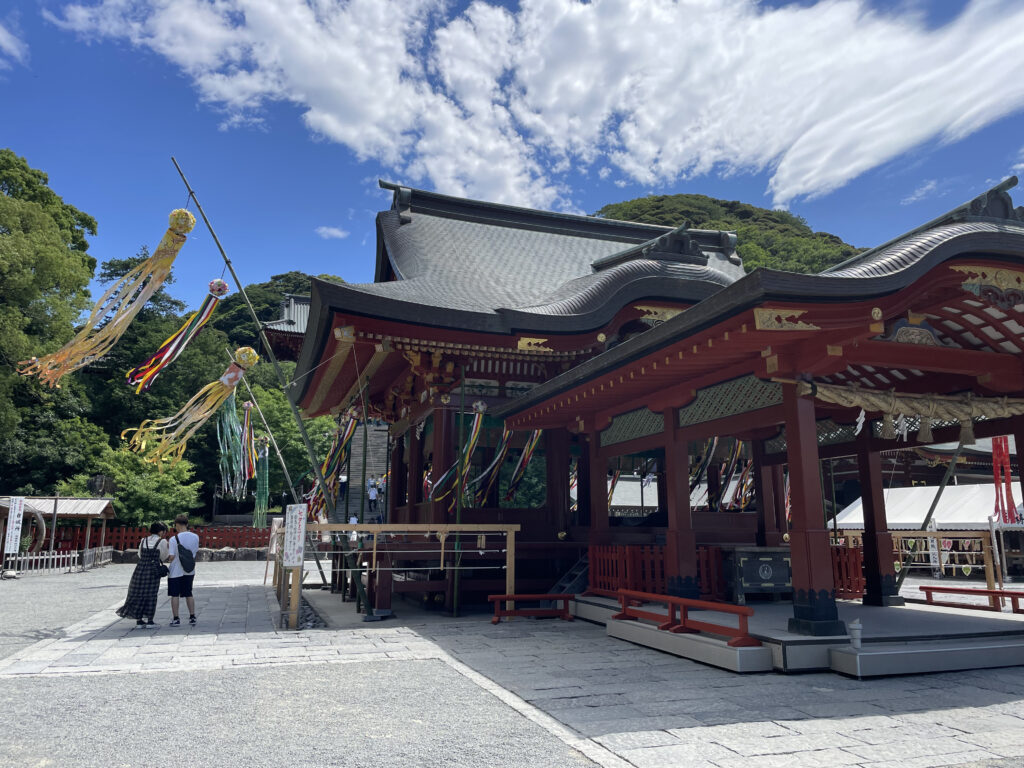


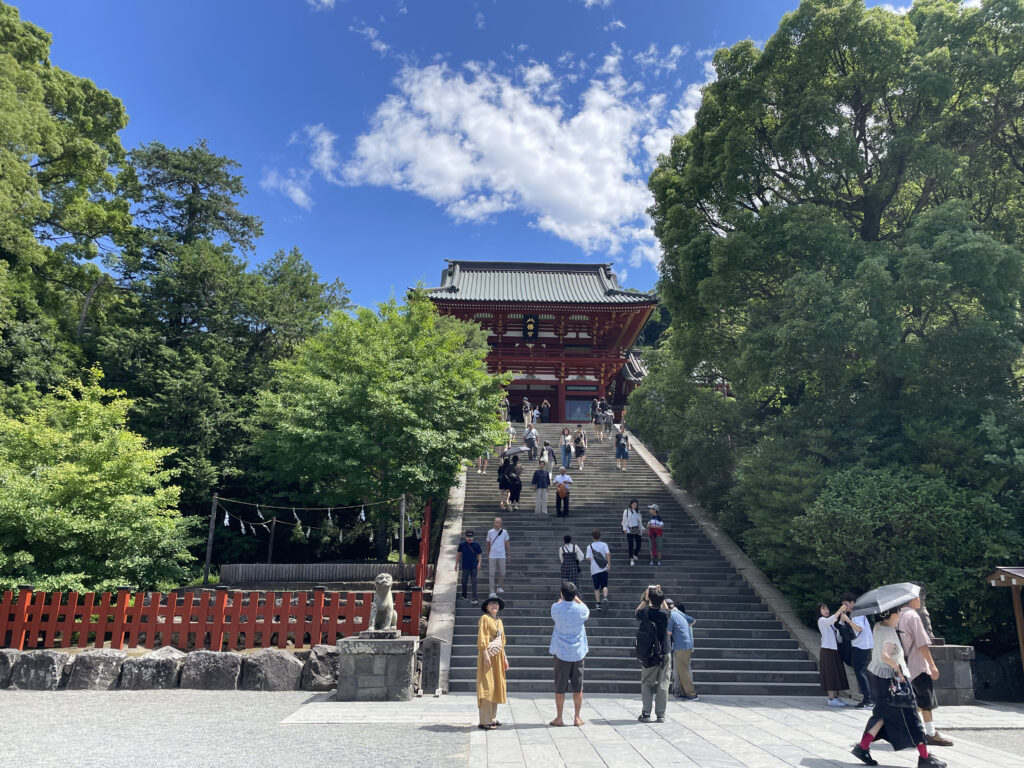
3. Egara Tenjin Shrine (10 minutes on foot from Tsurugaoka Hachimangu Shrine)
【Historical Background】
Founded in 1104, Egara Tenjin Shrine is dedicated to Sugawara no Michizane, the god of learning. Minamoto no Yoritomo commanded its reconstruction as the kimon (northeast) guardian of Kamakura, serving as a protective shrine for the shogunate. During the Kamakura period, it attracted not only warriors but also scholars and monks who came to pray for both academic success and martial fortune. The main hall, built in the sangen-sha nagare-zukuri style with a copper roof, remains an Important Cultural Property dating from the Kamakura period.
【Highlights】
- Serene Grounds: Shaded pathways lined with trees create a peaceful atmosphere—perfect for reflecting on history away from the city’s hustle.
- Paintbrush Mound & Amulets: Devoted artists have dedicated paintbrushes to the shrine (eppitsu-dzuka), and among the popular prayer plaques are those for success in exams. The simple-design amulets for academic achievement are especially popular.
- Seasonal Beauty: Plum blossoms in spring and vibrant autumn leaves decorate the shrine grounds—ideal for photography.
【Visitor Tips】
- Plan for about 30 minutes. The shrine is busy during exam season; for a quiet visit, weekdays are best.
- If writing a wish on an ema, take your time to write from the heart.
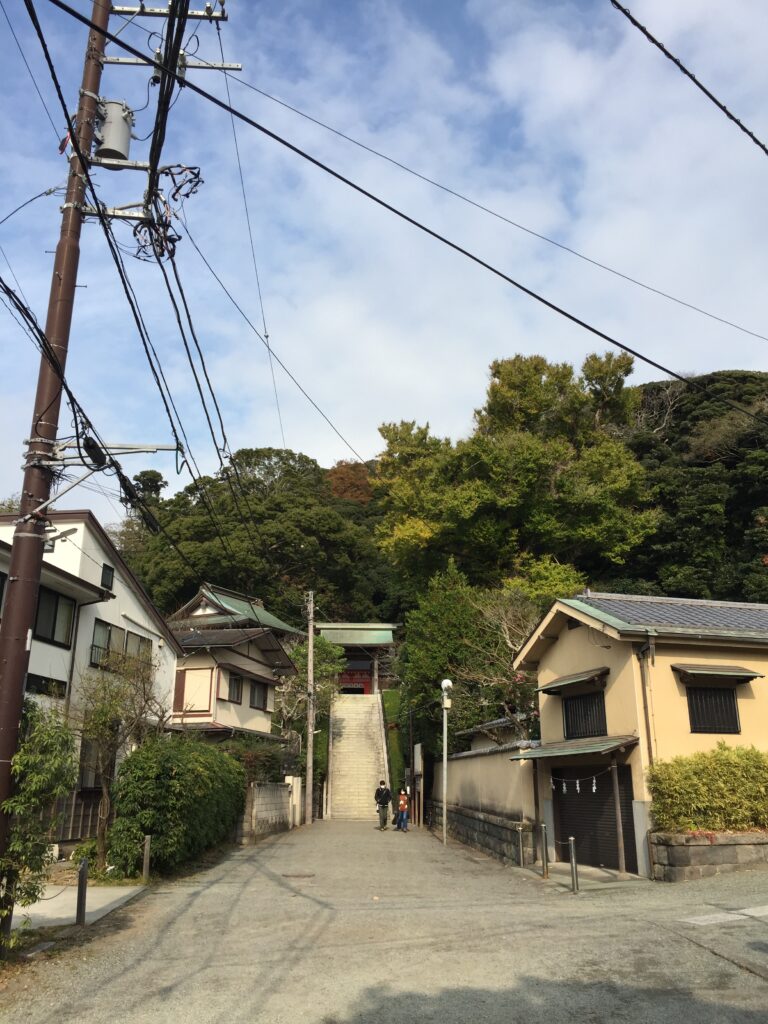
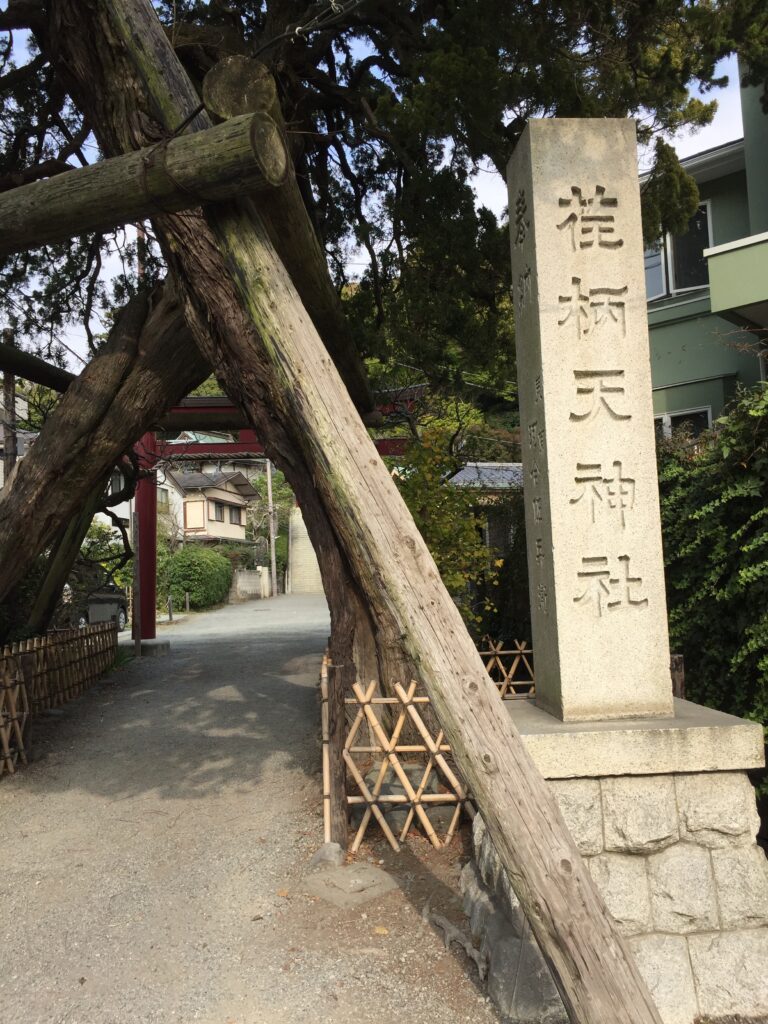
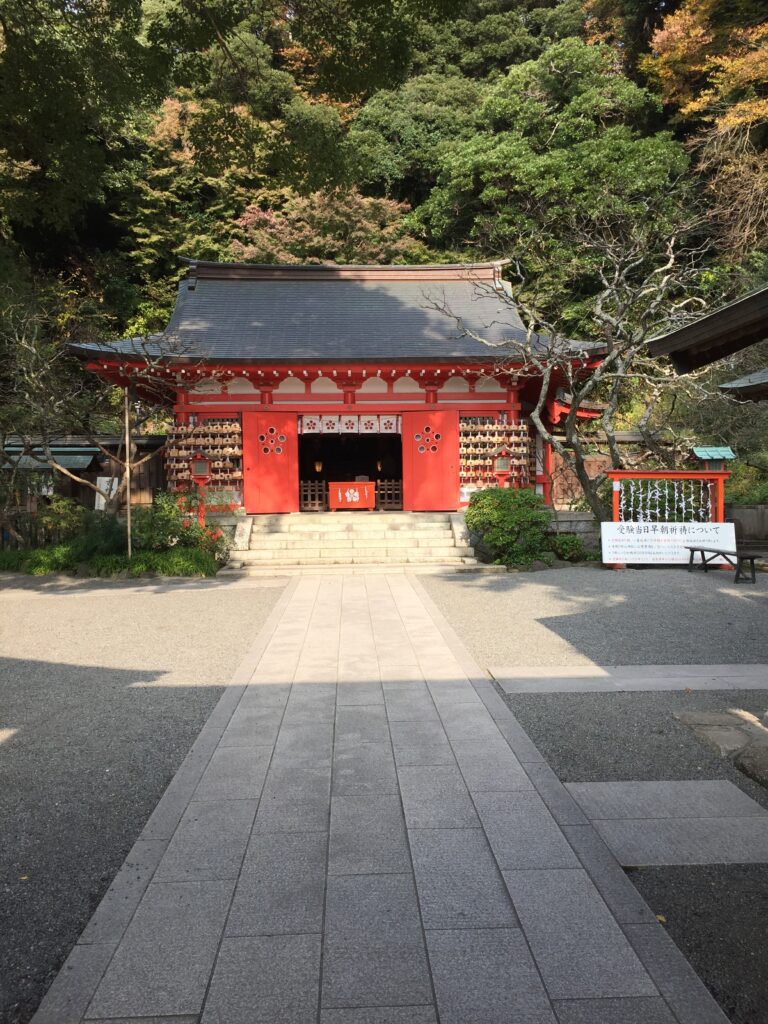
4. Additional Recommended Sites (+α, time permitting)
If time allows, these spots offer deeper insight into Kamakura’s history:
- Wakajima (Zaimokuza Coast): An artificial island built in 1232 for maritime trade—once a key trading hub of the Kamakura Shogunate. During summer it’s lively with beachgoers, but visiting at tranquil sunset brings a poetic blend of ocean breeze and history.
- Ruins of Eifuku-ji and Shōchō-juin: Temples established by Yoritomo; now marked only by memorial stones and masonry—standing among them, one can imagine the grandeur of their original structures.
- Kamakura-gū & Prince Moriyoshi’s Dungeon Site: Kamakura-gū, established in the Meiji era, is known as the former imprisonment site of Prince Moriyoshi, son of Emperor Go-Daigo. It’s about a 15-minute walk from Egara Tenjin Shrine—a place that resonates with historical solemnity.
Pro Tip: If you’re short on time, Wakajima is especially recommended—its coastal setting offers a distinct contrast to the city’s historical atmosphere. Watching the sunset there creates a special moment to reflect on Kamakura’s trading legacy.
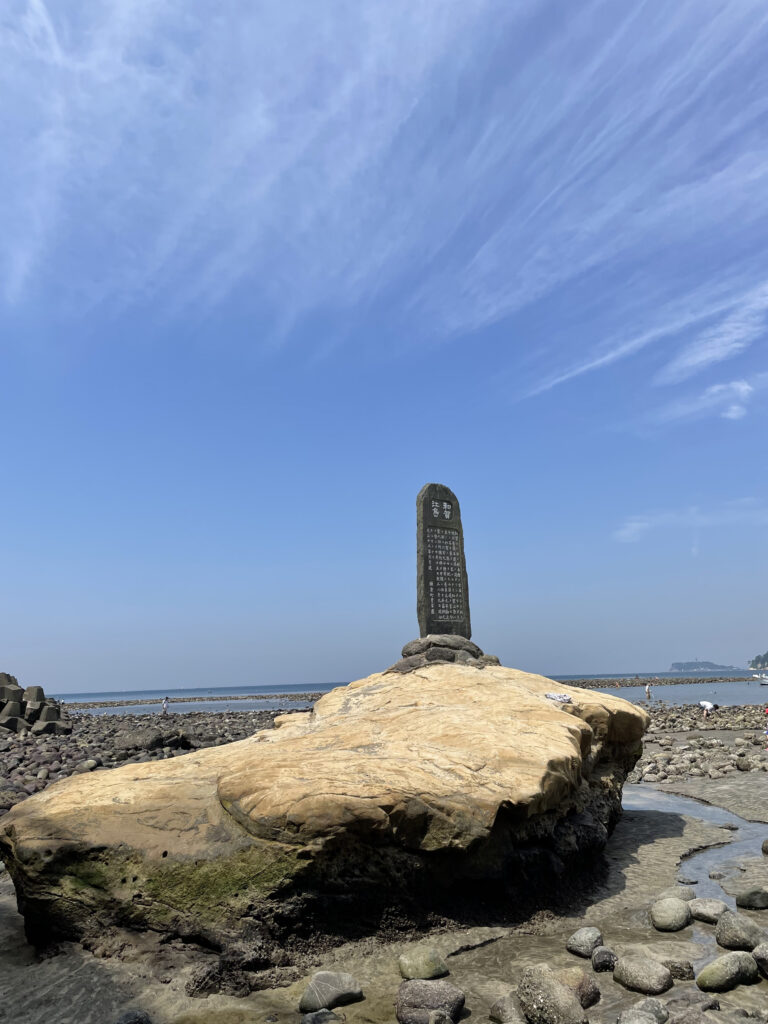
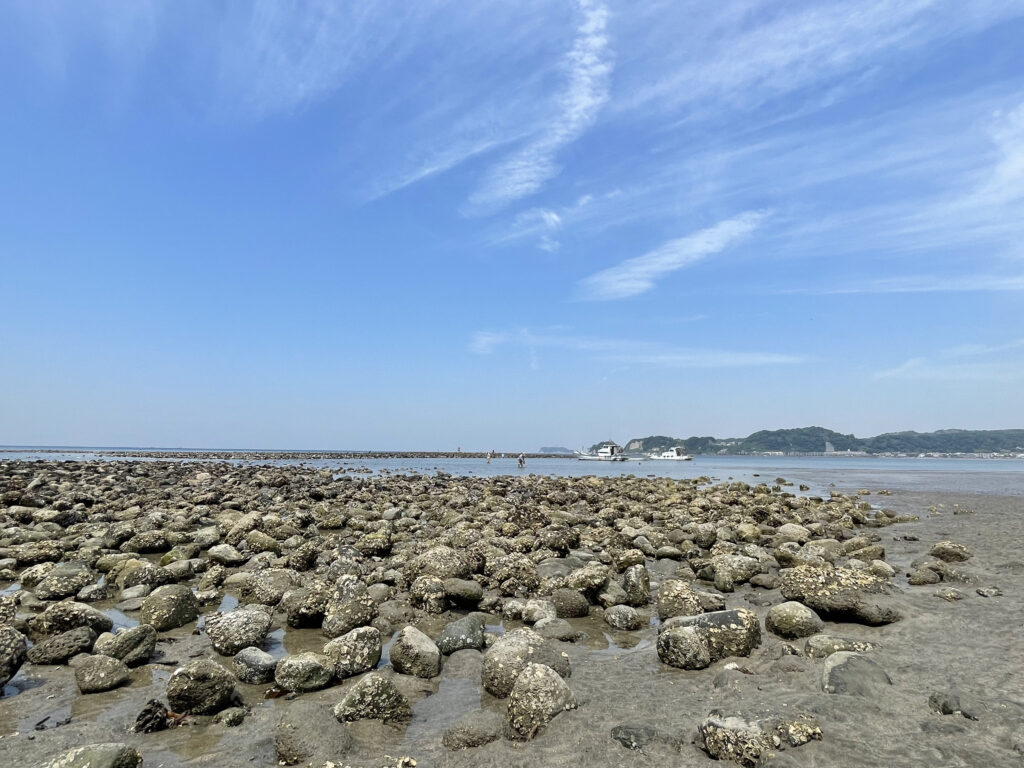

Route Overview Table
| Order | Location | Duration | Highlights & Historical Significance |
|---|---|---|---|
| ① | Utsunomiya Zushi Gosho Ruins | ~20 min | Political center moved by Yasutoki; shogun coming-of-age site |
| ② | Tsurugaoka Hachimangu Shrine | ~60 min | Minamoto clan’s protective shrine; Sanetomo’s assassination site |
| ③ | Egara Tenjin Shrine | ~30 min | Guardian shrine established by Yoritomo; god of learning |
| ④ | Wakajima / Eifuku-ji & Shōchō-juin Ruins | ~60 min | Trading hub; temple remnants offering historical depth |
Total time: about 3–4 hours (including breaks or nearby exploring, up to around 5 hours)
Total distance: roughly 2.5 km on foot
Highlights of This Historical Journey
Walkable, compact route: All key spots are within easy walking distance from Kamakura Station. Wear comfortable shoes and enjoy both history and ambiance within a compact walking course—perfect for stopping at local cafés or exploring Komachi Street or Wakamiya Ōji between destinations.
Narrative-rich history: From Yoritomo’s establishment of the shogunate to Sanetomo’s assassination and Yasutoki’s reforms—dramatic episodes bring history alive. For example, Sanetomo’s assassination under the gingko tree marks the end of the Minamoto bloodline and the rise of the Hōjō clan.
Photogenic spots: Cherry blossoms along Dankazura, the tranquil grounds of Egara Tenjin, and the coastal scenery of Wakajima all offer excellent photo opportunities. Especially during spring blossoms or autumn foliage, bring a camera and enjoy.
Chronological markers:
- 1180: Yoritomo relocates Tsurugaoka Hachimangu.
- 1192: Yoritomo is appointed Seii Taishōgun, establishing the shogunate.
- 1219: Sanetomo is assassinated at Tsurugaoka.
- 1225: Yasutoki moves the shogunate center to Utsunomiya Zushi Gosho.
- 1333: Fall of the Kamakura Shogunate.
Travel Tips: Spring and fall are the most rewarding seasons—enjoy local specialties like shirasu-don or matcha sweets along Komachi Street while soaking up the history. To avoid crowds, begin early on a weekday morning.
Final Thoughts
This route offers a journey where the romance of history and the charm of Kamakura come together. By visiting Utsunomiya Zushi Gosho Ruins, Tsurugaoka Hachimangu Shrine, and Egara Tenjin Shrine, and optionally Wakajima or temple ruins, you’ll walk in the footsteps of Minamoto no Yoritomo and the Hōjō clan. This compact but rich course satisfies both history lovers and casual visitors alike. Combine historical exploration with strolling Komachi Street and enjoying seasonal scenery, and immerse yourself in the story that is Kamakura.
May your journey become a beautiful encounter with the legacy of Kamakura!
